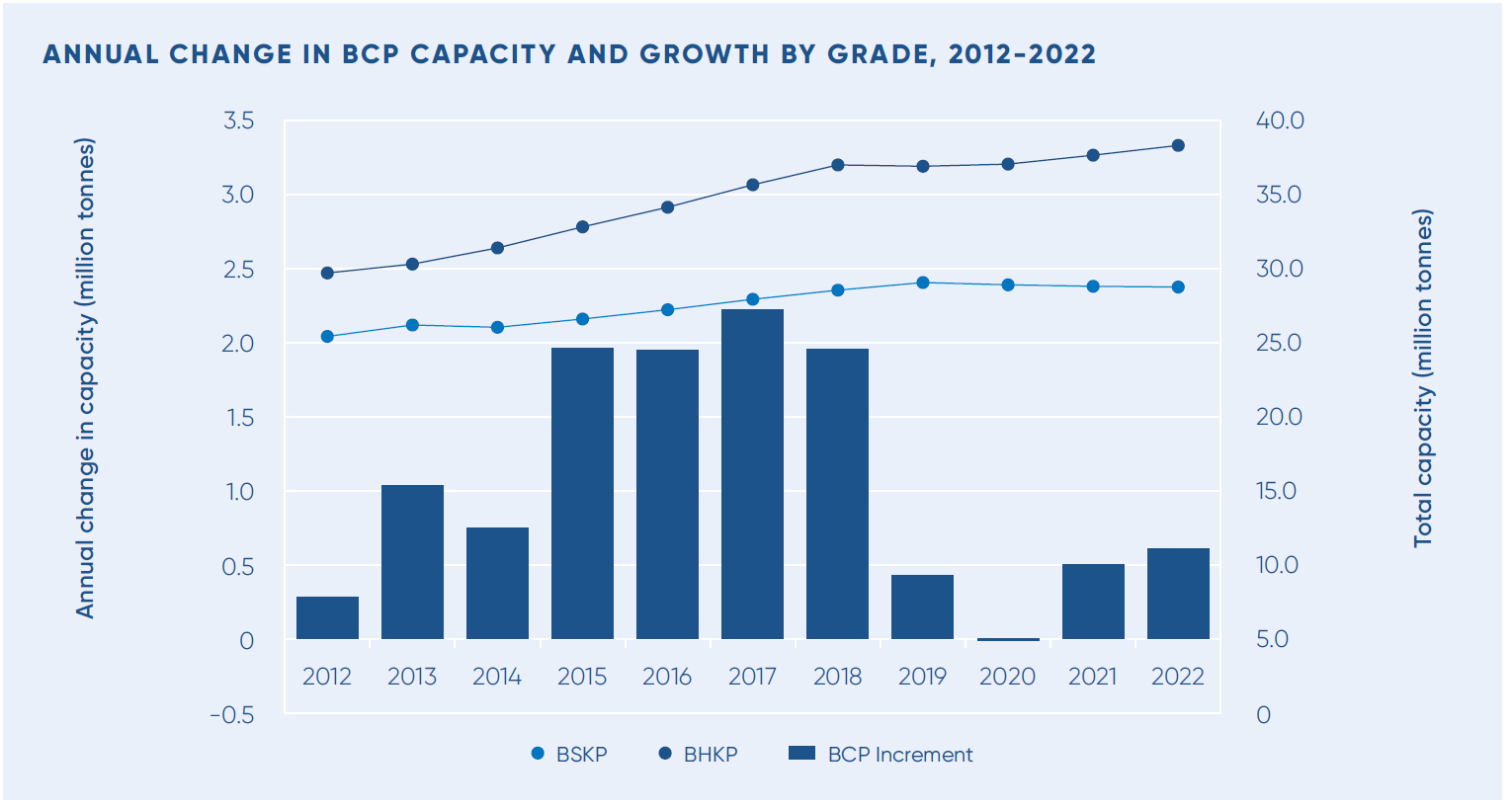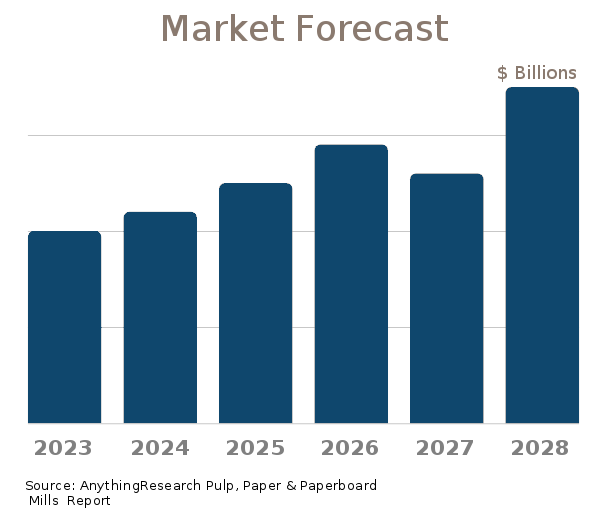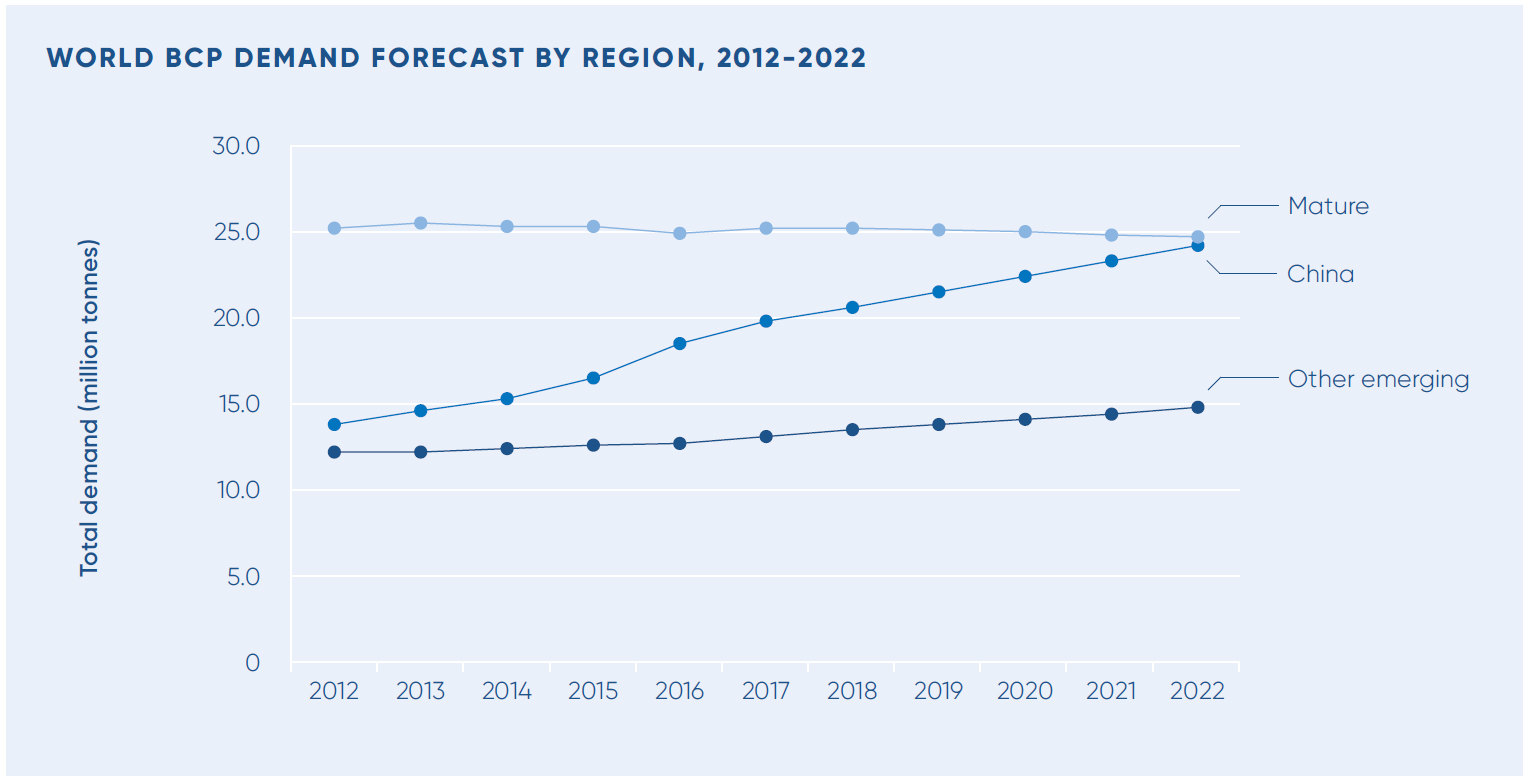Is the Future Bright for Pulp Industry Trends?
Outlook for Pulp: Market Trends and Insights
The pulp industry is constantly evolving, driven by changes in consumer behavior, sustainability concerns, and technological advancements. In this section, we will explore the recent market trends shaping the outlook for the pulp industry, the influence of sustainability on the future of pulp, and the factors driving innovation and growth in the pulp market.
Recent Market Trends Shaping the Pulp Industry Outlook
The pulp industry is experiencing significant shifts in response to changing market dynamics and consumer demands. Here are some of the recent market trends that are shaping the outlook for the pulp industry:
- Online Shopping and E-commerce Growth: With the rise of online shopping, the demand for pulp and paper products has increased. The growth of e-commerce platforms in countries like the United States and China has driven packaging innovation to ensure better shelf display and faster delivery services.
- Global Demand for Packaging Products: The global demand for packaging products is expanding due to the growth of e-commerce and online shopping. Countries such as Japan, China, Europe, and the United States are witnessing a surge in demand for packaging materials, creating opportunities for the pulp industry.
- Big Data and Automation: The use of big data and automation platforms is revolutionizing the pulp industry. Companies like Pulmac are leveraging big data analytics to analyze trends, optimize production, and improve marketing and sales strategies.
- Lightweight Packaging: Lightweight packaging is gaining popularity in the pulp industry. It helps reduce expenses, lower CO2 emissions, and cut down shipping costs while supporting business growth.
- Recyclable Pulp and Paper Products: The demand for recyclable pulp and paper products is on the rise as consumers prioritize sustainability. Overcoming challenges related to waterproof coatings, companies are developing innovative solutions to meet consumer demands.
- Growth in Hygiene Products: The continued growth of hygiene products, such as toilet paper and tissues, is driving the demand for packaging in the pulp industry. The hygiene market presents significant opportunities for the industry to expand.
- Thermal Packaging Market: The rise in food delivery services has led to the growth of the thermal packaging market. Pulp and paper are being utilized in the development of thermal packaging solutions, creating new avenues for growth.
- Grease-Resistant Packaging: Efforts are underway to develop packaging resistant to grease for food products. Regulatory changes and consumer demands are driving the industry to explore chemical-free options and eliminate fluorochemicals.
- Shift towards Biodegradable Alternatives: With increasing anti-plastic sentiments, there is a significant shift towards biodegradable alternatives and eco-friendly options. This presents opportunities for the pulp and paper industry to fill the gap and provide sustainable solutions.
These market trends indicate a positive outlook for the pulp industry, with a growing demand for sustainable packaging solutions and a focus on innovation to meet consumer needs.
Sustainability and the Future Outlook for Pulp
Sustainability plays a crucial role in shaping the future outlook for the pulp industry. With increasing environmental concerns, consumers and businesses are prioritizing sustainable practices. Here’s how sustainability is influencing the future of pulp:
- Demand for Sustainable Packaging: Consumers are actively seeking environmentally friendly packaging options. This demand for sustainability is driving the adoption of recyclable and biodegradable pulp and paper products.
- Reduction of CO2 Emissions: The pulp industry is making efforts to reduce its carbon footprint by implementing sustainable practices. This includes using renewable energy sources and adopting more efficient production processes.
- Circular Economy and Recycling Initiatives: The pulp industry is embracing the circular economy model, where the focus is on recycling and reusing materials. Companies are developing innovative recycling initiatives to minimize waste and promote resource efficiency.
- Certification Programs: Certification programs, such as Forest Stewardship Council (FSC) and Programme for the Endorsement of Forest Certification (PEFC), provide assurance to consumers that pulp and paper products come from sustainably managed forests. Increasingly, consumers are looking for products with these certifications.
- Collaboration and Partnerships: Collaboration between stakeholders, including pulp producers, packaging manufacturers, and retailers, is driving sustainable practices in the industry. By working together, companies can create a more sustainable supply chain and ensure the long-term viability of the pulp industry.
It is evident that sustainability is a key driver of innovation and growth in the pulp industry. Companies that prioritize sustainable practices and develop environmentally friendly solutions will have a competitive edge in the market.
Factors Driving Innovation and Growth in the Pulp Market
Innovation is critical for driving growth in the pulp market. Here are some of the key factors that are fueling innovation in the industry:
- Technological Advancements: Rapid advancements in technology, such as digitalization, automation, artificial intelligence (AI), and the Internet of Things (IoT), are transforming the pulp industry. These technologies enable companies to optimize production processes, improve product quality, and enhance supply chain management.
- Changing Consumer Preferences: As consumer preferences evolve, the pulp industry must adapt to meet their demands. This includes developing sustainable packaging solutions, offering customized products, and improving the overall consumer experience.
- Regulatory Environment: The regulatory environment plays a significant role in driving innovation in the pulp market. Stricter regulations regarding environmental impact and waste management encourage companies to develop innovative solutions that comply with these regulations.
- Competitive Dynamics: The pulp market is highly competitive, and companies must innovate to stay ahead of their competitors. New product development, process optimization, and strategic partnerships are some of the key strategies used by companies to maintain a competitive edge.
In conclusion, the outlook for the pulp industry is optimistic, with market trends indicating a growing demand for sustainable packaging solutions. Sustainability is a key driver of innovation and growth in the industry, as consumers and businesses prioritize environmentally friendly practices. Factors such as technological advancements, changing consumer preferences, and competitive dynamics are fueling innovation in the pulp market. By embracing sustainability and focusing on innovation, companies can position themselves for success in the evolving pulp industry.
Global Demand and Market Dynamics
The global demand for pulp is influenced by various factors, including the rapid growth in online shopping and e-commerce. As more consumers turn to online platforms for their shopping needs, the demand for packaging materials, including pulp, has increased. Packaging plays a crucial role in ensuring the safe and efficient delivery of products purchased online. The rise in online shopping has also led to packaging innovations focused on better shelf display and fast delivery services.
Several regions around the world have experienced significant growth in online shopping and e-commerce, driving the demand for pulp. Countries like the United States, China, Japan, and various countries in Europe have witnessed a surge in the sales of pulp and paper products due to the booming online retail market. This growth in demand for packaging products has led to opportunities for the pulp industry to expand its global reach.
In addition to online shopping, market dynamics within the pulp industry also impact its outlook. Companies in the industry are leveraging big data analysis to gain insights into trends, optimize production, and enhance marketing and sales strategies. Automation platforms, such as those offered by industry leaders like Pulmac, enable companies to streamline their operations and improve efficiency.
Another significant market dynamic in the pulp industry is the growing popularity of lightweight packaging. Lightweight packaging not only cuts costs but also reduces CO2 emissions and shipping expenses. This trend aligns with the increasing demand for sustainable practices and environmental responsibility. Consumers are increasingly conscious of the environmental impact of products they purchase, leading to a rise in recyclable pulp and paper products.
The growth of the pulp industry is also driven by the continued demand for hygiene products such as toilet paper and tissues. As the population continues to grow and hygiene standards become a priority, the need for packaging in this segment is expected to rise as well. Furthermore, the rise in food delivery services has led to the growth of the thermal packaging market, creating additional opportunities for pulp and paper packaging solutions.
One of the challenges in the industry is developing packaging resistant to grease for food products. As regulations regarding chemical usage in packaging become stricter, companies are exploring chemical-free options to meet industry demands and consumer preferences. Furthermore, the industry is shifting towards biodegradable alternatives and eco-friendly options to address anti-plastic sentiments.
The global pulp market is forecasted to experience significant growth in the coming years. Market reports estimate that the market will reach a value of millions of dollars by 2028, with a substantial compound annual growth rate (CAGR). The market’s growth is fueled not only by the above-mentioned factors but also by technological advancements, changing consumer preferences, and competitive dynamics.
To summarize, the global demand for pulp is heavily influenced by the growth of online shopping and e-commerce. Market dynamics such as packaging innovations, lightweight packaging, sustainability practices, and the rise of hygiene products and food delivery services are driving the pulp industry’s outlook. The market is expected to experience substantial growth, providing opportunities for companies to capitalize on these trends and contribute to the ongoing evolution of the industry.
Challenges and Opportunities in the Pulp Industry
The pulp industry is facing several challenges in today’s market, from inventory overhang to pricing alignment. However, amidst these challenges, there are also numerous opportunities for growth and innovation. In this section, we will explore the current challenges faced by the pulp industry and how companies are overcoming them. We will also discuss the sustainable practices that are driving growth and innovation in the industry.
Current Challenges in the Pulp Industry
- Inventory Overhang: Pulp inventory volumes, particularly for BSK (Bleached Softwood Kraft) pulp, are at a record high, which poses a threat of overhang in the market. This overhang is a result of tepid demand while production continues at a high rate. To address this challenge, pulp producers are exploring temporary and permanent mill downtime, such as the Svetlogorsk mill explosion and Canadian wildfires, to help balance inventories and introduce new capacity.
- Pricing Alignment: While demand for pulp in North America and Europe is waiting for pricing alignment, large volume transactions below $500 per tonne are reported in China. This discrepancy in pricing poses a challenge for the industry as it affects profitability and price competitiveness. Pulp producers are closely monitoring the global market dynamics to ensure pricing alignment and adapt to market conditions.
- Production Costs: Production costs play a crucial role in the profitability of pulp producers. As pulp prices fall to the high-end of the cost curve, reducing profitability, it becomes increasingly important for companies to optimize their production processes and manage costs effectively. The focus is on improving efficiency and adopting sustainable practices that reduce environmental impact while also reducing costs.
Overcoming Challenges and Capitalizing on Opportunities
Despite the challenges faced by the pulp industry, companies are finding ways to overcome them and capitalize on the opportunities available. Here are some strategies employed by pulp producers:
- Market Diversification: Pulp producers are exploring new markets and diversifying their customer base to reduce their dependence on a single market. By expanding their reach and targeting emerging markets, companies can mitigate the impact of pricing misalignments in specific regions and sustain growth.
- Product Innovation: To stay competitive and meet changing customer demands, pulp producers are focusing on product innovation. This includes developing new and improved pulp grades that offer enhanced properties and performance. For example, there is a growing demand for lightweight packaging solutions, which not only reduce costs and environmental impact but also support business growth.
- Partnerships and Collaborations: Collaboration within the industry and strategic partnerships with customers and suppliers can help overcome challenges and drive growth. By leveraging each other’s strengths and expertise, companies can optimize production processes, improve supply chain efficiency, and create mutually beneficial opportunities.
Sustainable Practices Driving Growth and Innovation
In recent years, sustainability has become a key focus in the pulp industry. Companies are increasingly adopting sustainable practices that drive growth and innovation while minimizing their environmental footprint. Here are some notable sustainable practices:
- Recyclable Pulp and Paper Products: The demand for recyclable pulp and paper products is on the rise as consumers become more conscious of their environmental impact. Pulp producers are investing in research and development to overcome challenges associated with waterproof coatings and other barriers to recyclability, ensuring that their products meet consumer demands for sustainability.
- Lightweight Packaging: Lightweight packaging solutions are gaining popularity in the pulp industry. By using less material, these solutions not only reduce costs and CO2 emissions but also lower shipping costs. Lightweight packaging supports business growth by improving the efficiency of supply chains and enhancing sustainability credentials.
- Shift towards Biodegradable Alternatives: The anti-plastic sentiment and increasing focus on eco-friendly alternatives have opened up opportunities for the pulp industry. Pulp-based products offer biodegradability and eco-friendliness, making them an attractive alternative to single-use plastics. Market trends indicate a shift towards biodegradable alternatives, presenting significant growth potential for the pulp industry.
In conclusion, while the pulp industry faces challenges such as inventory overhang and pricing alignment, it is also experiencing opportunities for growth and innovation. Pulp producers are overcoming these challenges through market diversification, product innovation, and strategic collaborations. Additionally, sustainable practices are driving growth and innovation in the industry, with a focus on recyclable products, lightweight packaging, and biodegradable alternatives. By embracing these opportunities and sustainable practices, the pulp industry is well-positioned to navigate the evolving market landscape and continue to thrive.
Sources:
Table 1: Global Pulp Market Forecast (Millions of Dollars)
| Year | Revenue |
|---|---|
| 2021 | 500 |
| 2022 | 600 |
| 2023 | 700 |
| 2024 | 800 |
| 2025 | 900 |
| 2026 | 1000 |
| 2027 | 1100 |
| 2028 | 1200 |
Challenges and Opportunities Summary
| Challenges | Solutions |
|---|---|
| Inventory Overhang | Temporary and permanent mill downtime, balancing inventories, and introducing new capacity |
| Pricing Alignment | Monitoring global market dynamics, ensuring pricing alignment, and adapting to market conditions |
| Production Costs | Optimizing production processes, managing costs effectively, and adopting sustainable practices |
| Market Diversification | Expanding into new markets, diversifying customer base, and targeting emerging markets |
| Product Innovation | Developing new and improved pulp grades that offer enhanced properties and performance |
| Partnerships and Collaborations | Collaborating within the industry and forming strategic partnerships to optimize production processes and improve supply chain efficiency |
| Recyclable Pulp and Paper Products | Investing in research and development to overcome barriers to recyclability and meet consumer demands for sustainability |
| Lightweight Packaging | Developing lightweight packaging solutions to reduce costs, CO2 emissions, and shipping expenses |
| Shift towards Biodegradable Alternatives | Capitalizing on the demand for eco-friendly alternatives to single-use plastics |
The tables above provide a visual representation of the data mentioned in the blog post. They summarize the global pulp market forecast and the challenges and opportunities in the pulp industry, along with the corresponding solutions. These tables help to organize and present the information in a clear and concise manner.
FAQs about Outlook for Pulp
How are recent market trends shaping the outlook for the pulp industry?
To understand how recent market trends are influencing the outlook for the pulp industry, we can consider factors like online shopping growth, global demand for packaging products, and the adoption of lightweight packaging.
What role does sustainability play in the future outlook for the pulp industry?
Sustainability is a key factor shaping the future outlook for the pulp industry, with a focus on demand for sustainable packaging, reduction of CO2 emissions, circular economy initiatives, certification programs, and collaboration to drive sustainable practices.
What factors are driving innovation and growth in the pulp market?
Innovation and growth in the pulp market are being fueled by technological advancements, changing consumer preferences, regulatory environment, and competitive dynamics within the industry.
How is the global demand for pulp influenced by market dynamics and online shopping growth?
The global demand for pulp is impacted by factors like online shopping growth, packaging innovations, lightweight packaging trends, sustainability practices, the rise of hygiene products, and developing grease-resistant and biodegradable packaging options.
What are the current challenges faced by the pulp industry and how are companies overcoming them?
Challenges in the pulp industry include inventory overhang, pricing alignment, and production costs, which companies are addressing through strategies like market diversification, product innovation, partnerships, and sustainable practices.
Market trends are shaping the pulp industry with sustainability driving innovation and growth. Global demand, influenced by e-commerce, presents challenges and opportunities for the industry. Companies are overcoming hurdles by focusing on sustainable practices for growth. In conclusion, the pulp industry is evolving rapidly, highlighting the importance of adapting to market trends and embracing sustainability for a prosperous future.




